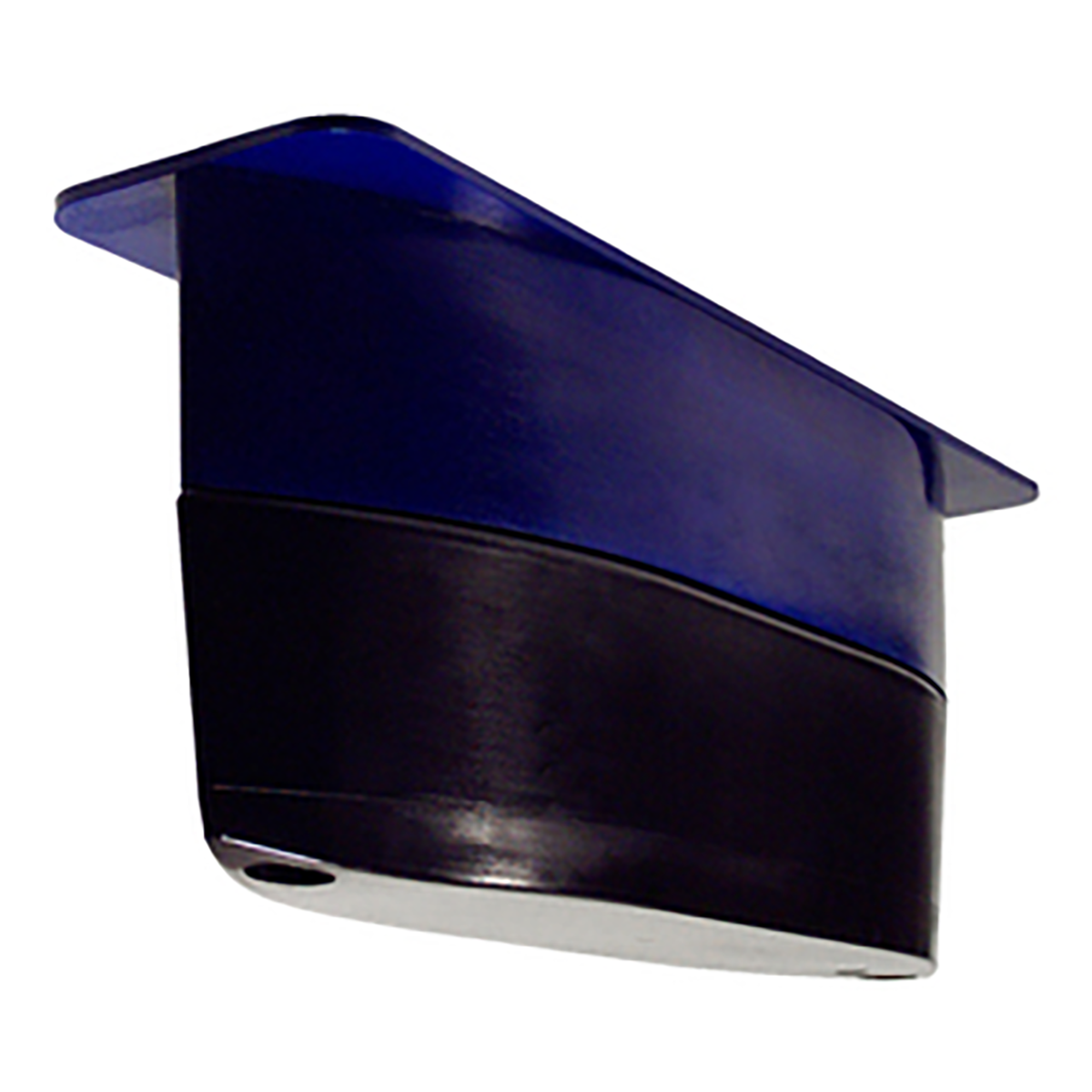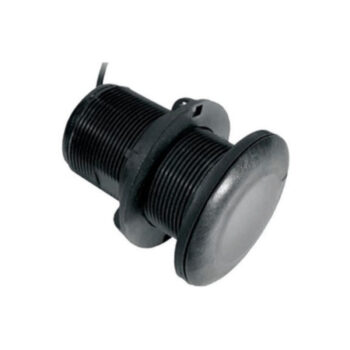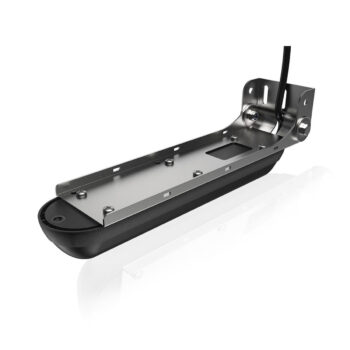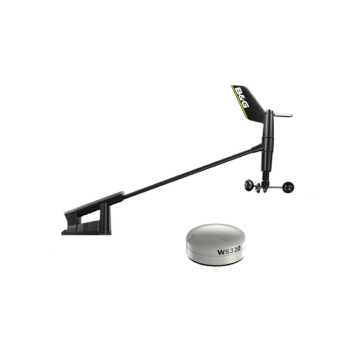The Fishfinding Revolution is Here!
Airmar’s new Broadband transducers represent the next generation of technology that will allow fishermen to unlock new secrets in fishfinding. These transducers are designed for
use specifically with Broadband, CHIRP, FM, and Spread-Spectrum fishfinders.
CHIRP Fishfinders transmit across a wide frequency band instead of using a single frequency. This is also known as “Frequency Modulation” or “Spread-Spectrum” Transmissions.
These waveforms are typically of long duration and for example may start at 42 kHz and end at 65 kHz. Energy transmitted into the water can be 10 to 50 times greater than a traditional fishfinder. By storing the shape of the transmitted waveform in memory and comparing it to the received echoes using pattern
matching techniques (also called pulse compression), it is possible to find targets within the noise and precisely determine their range with astounding accuracy (see photo).
Benefits
Extreme target detail and image resolution at all depths
Precise separation between baitfish and gamefish
Bottom discrimination of fish laying on the seabed
Deep sounding accuracy down to 3,000 m (10,000’)
Ability to detect targets at greater depths & higher speeds
Ability to find targets within the noise (“snow” on the displa
More Energy on Target = Better Fish Detection
Traditional fishfinders
transmit pulses at a single frequency (such as 50 kHz and 200 kHz) and this pulse is often referred to as a “tone burst”. These pulses can be of very high power but are typically of very short duration and this limits the energy that
can be transmitted into the water.
With tone burst fishfinders there is always the trade-off between pulse length and target resolution. For example, if a fishfinder transmits a pulse that is 500 microseconds in duration, it has a pulse length of 0.7 m (2.4’). With a tone burst, no targets can be resolved that are closer to one another than the pulse length. So fish less than 0.7 m (2.4’) apart will appear as a single large mass, and fish less than 0.7 m (2.4’) from the bottom will appear attached to the sea bed and will be difficult or impossible to detect. See graphic illustration above. Longer pulse lengths at 50 kHz are typically used to put more energy into the water to improve deep-water detection but doubling the pulse length reduces target discrimination by half thereby compromising resolution and detail. There is no ‘free lunch”
With CHIRP fishfinders,
there is no trade-off between pulse length and target resolution. While CHIRP fishfinders may output less peak power than a conventional fishfinder, what really matters is the energy put into the water with each pulse. Wide band,
frequency modulated pulses (130-210 kHz, for example) can be very long in duration and put 10-50 times more energy into the water.
Unsurpassed target detection and resolution is achieved with digital signal processing using pattern matching techniques. With CHIRP fishfinders, the ability to determine the separation between
fish and between fish and bottom can be a matter of inches as compared to several feet with traditional fishfinders. Closely grouped fish can now be shown as distinct targets instead of a single mass and show fish close to the bottom rather than being hidden. It is well known that different fish species and fish sizes return stronger echoes as certain frequencies. With traditional fishfinders operating at fixed frequencies(50k Hz and 200 kHz), fish echoes may be weak or not detected at all. Since CHIRP fishfinders transmit pulses over wide frequency bands, this maximizes fish detection capability
Features
Depth and fast-response water-temperature sensor
3 kW 50kHz for superior deep-water performance from the low frequency
23° to 9° port-starboard beam
11° to 5° fore-aft beamw
Maximum depth performance to 3,048 m (10,000′)
1 kW high frequency: 150 to 250 kHz
25° constant beamwidth
Maximum depth performance of 152 m (500′)
132 kHz of total bandwidth from one transducer
Covers popular fishing frequencies of 38, 50, and 200 kHz plus everything else in the bandwidths
High frequency provides superior shallow-water performance, bottom detail, and fish-target separation
High wide beamwidth yields more coverage for detecting fish in the upper-water column
Urethane housing with fairing for optimal performance
Also available as a pocket/keel (CM599LHW) mount
Specifications
Weight 20.8 kg (46 lb.)
Recommended Boat Length 9m (30′) and above
Hull Material Compatible with all hull materials
Hull Deadrise Up to 22°
Acoustic Window Epoxy/urethane
Includes Fairing and mounting hardware
Transducer Element 25 internal broadband ceramic assemblies






Avaliações
Não há avaliações ainda.